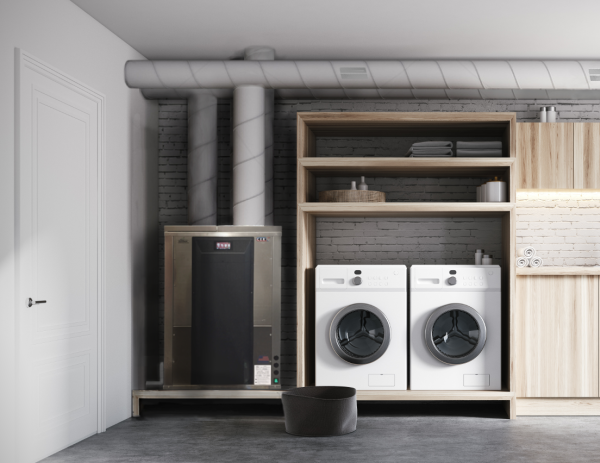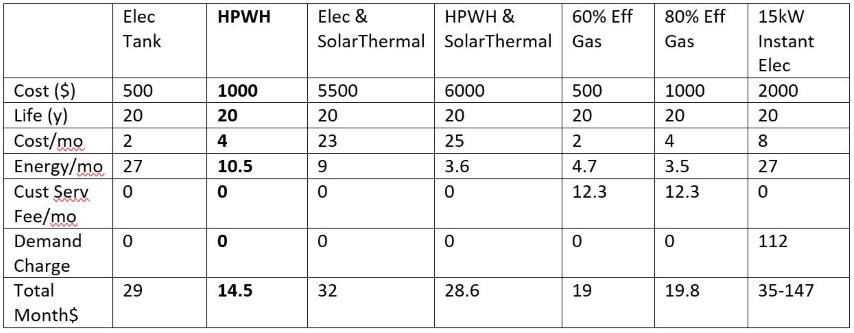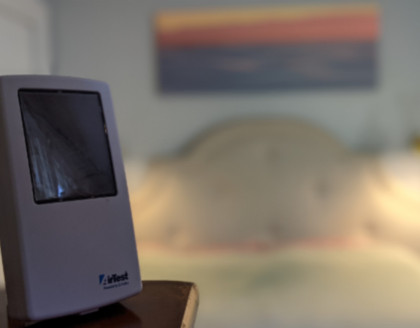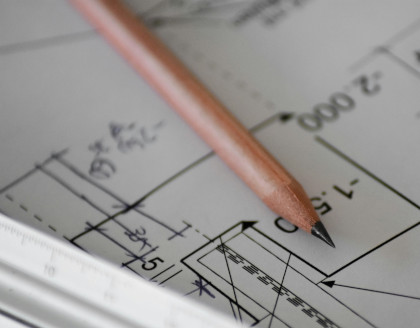 This neighborhood of high performance “Vermod” homes in Hardwick Vermont reached sustained temperatures of -25F in January 2018, much colder than ASHRAE 99.6% design day of -8F!
This neighborhood of high performance “Vermod” homes in Hardwick Vermont reached sustained temperatures of -25F in January 2018, much colder than ASHRAE 99.6% design day of -8F!It’s been a bitter cold winter in the northeast, which Ty can attest to as he visited 40 CERV ventilated homes spread across Vermont and New Hampshire. The cornerstone of these high performance homes in one of North America’s most challenging climates are heat pumps. Heat pumps for comfort, heat pumps for ventilation, heat pumps for hot water, heat pumps for clothes drying, and of course, heat pumps for food preservation (ie, refrigerators).
We have written about the performance advantage of heat pump water heaters. With this year’s bitter cold winter across the Midwest and Northeast, we want to emphasize that heat pump water heaters are important for cold climates. Too often, we hear uninformed folks remark that removing heat from your home in the winter to make hot water is counterproductive. It is not! From the bitter cold winters of Hardwick Vermont to the balmy Florida Keys, heat pump water heaters are one of those rare “hat trick” technical advances with combined efficiency, economic, and employment benefits.
 This “double box” Vermod home sitting on a windy hill is telling Mother Nature to send all the cold, wind, and snow she wants!
This “double box” Vermod home sitting on a windy hill is telling Mother Nature to send all the cold, wind, and snow she wants!Refrigerators are heat pumps, but working in the opposite direction of heat pump water heaters. That is, a refrigerator keeps my food cold and frozen by removing heat from the food and adding that heat to the inside of my house. During the summer, the unwanted heat addition is efficiently removed by my home’s air conditioner. In a similar, but opposite direction, my home’s mini-split heat pump adds additional heat to my house to make up for the small amount that was transferred by the heat pump water heater to my water tank. How much energy are we talking? The typical US home uses 18 gallons per day per person of hot water, which requires 3 kWh of thermal energy. Today’s heat pump water heaters operate with a coefficient of performance (COP...the COP is the ratio of heat output to electric power operating the heat pump) of 3. The 3 kWh of heat added to my daily 18 gallons of hot water consists of 2 kWh of heat from a home’s indoor ambient environment combined with 1 kWh of electrical energy that powers the heat pump. On average, a heat pump water heater is removing 83 Watts of heat per person. An “average” person is adding 100 Watts of heat to a home, so in effect, a heat pump water heater is moving one’s metabolic heat output into their hot water tank!
Heat Pump Water Heater Cost
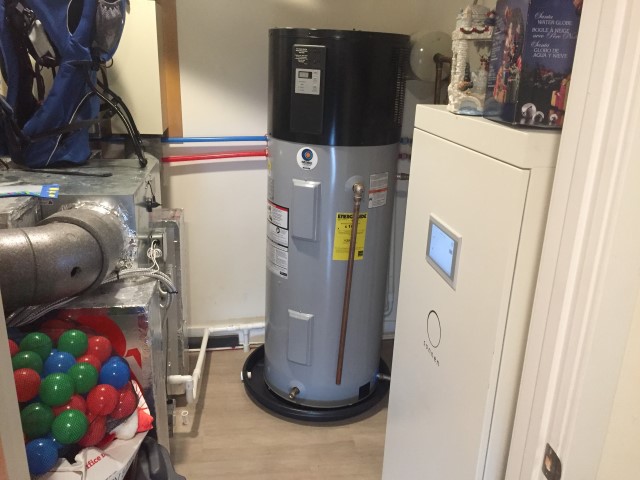 This Vermod home’s mechanical room includes CERV smart ventilation, heat pump water heater, and a battery pack!
This Vermod home’s mechanical room includes CERV smart ventilation, heat pump water heater, and a battery pack!Heat pump water heaters are the most cost effective choice in today’s economic environment, and will continue to be in the foreseeable future. Interestingly, “cheap” natural gas cannot compete with heat pump water heaters when customer service fees are included. Table 1 provides monthly hot water cost based on the cost of the water heater, water heater lifetime, monthly energy cost (assumes $0.10/kWh for electric and $3/million BTU for gas). Because electric service is essential, the customer service fee electric water heating is not included - households would incur this fee regardless of water heating type. Gas water heating is a non-essential, duplicate energy source that is limited in application. That is, electricity can accomplish all of a household’s energy needs, but natural gas cannot easily accomplish everything, such as running your TV. Therefore, if one adds natural gas to a home for heating water, the gas customer service fee is part of that water heating choice. Table 1 does not account for cost related to installing natural gas service, house envelope energy costs due to gas flue venting, or health costs related to gas and gas combustion products. A column for “instantaneous” electric water heaters is included in order to show the potentially high monthly costs consumers may experience as “demand” charges (assumed to be $8/kW) spread to residential consumers.
The costs assumed in the attached table can be adjusted to your local situation, however, the trends and values shown should be quite reasonable for most of North America. The gas customer service fee is an average of customer service fees found online. A low of $5.5/month was found for Intermountain Gas Company in Idaho, and a high of $21.35/month was discovered right in our central Illinois backyard with Ameren Illinois. Most service fees were in the $10-15 per month range. Water heater costs reflect big box store price listings. All water heaters were given a 20 year life, with a monthly cost determined on a simple basis (no interest or escalation factors). For solar thermal water heaters, an annual solar water heating contribution of 66% has been assumed with a $5000 capital cost for solar thermal installation.
Heat pump water heaters easily pay for their “premium” over their lifetime in comparison to basic electric water heaters. The high capital cost for solar thermal water results in high lifetime and monthly cost. Natural gas water heating is dominated by the addition of a customer service fee. Finally, demand or instantaneous water heaters do not improve the economics of standard storage tank water heating due to higher unit cost (assumed as $2000 in Table 1) and have the future potential of significant monthly cost if demand charges and time-of-day electric rates are more widely imposed on residential consumers.

